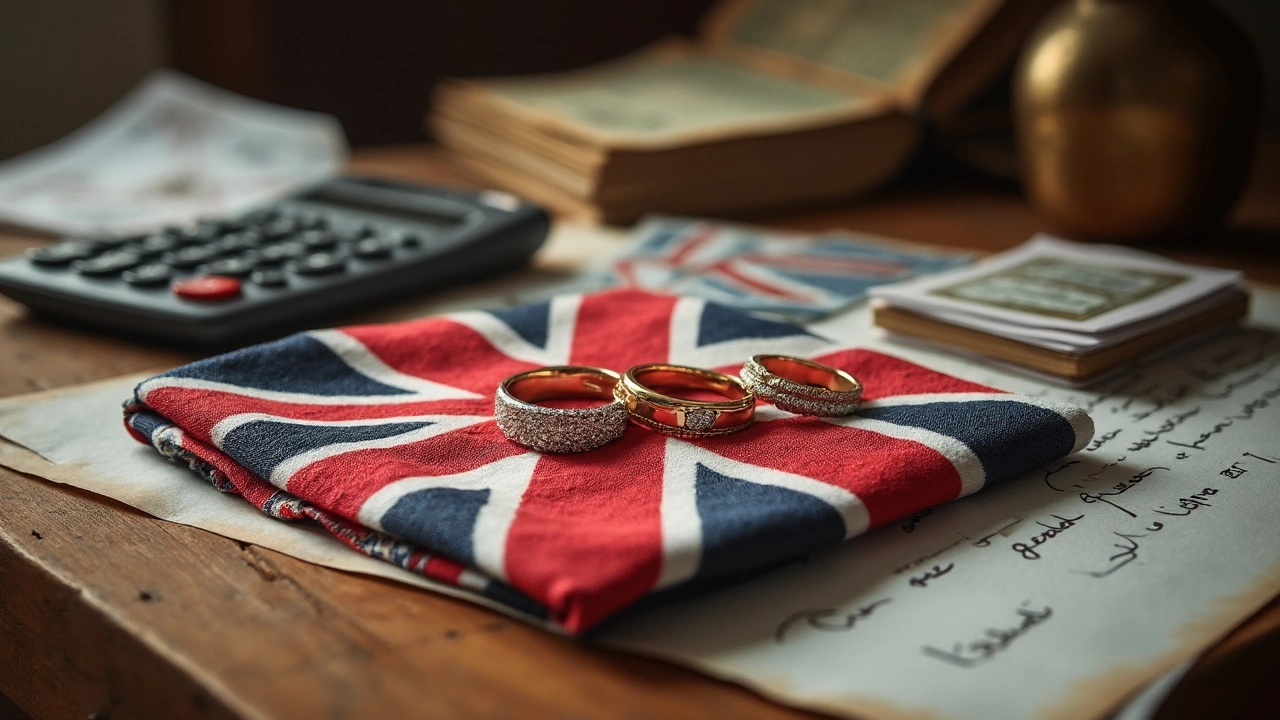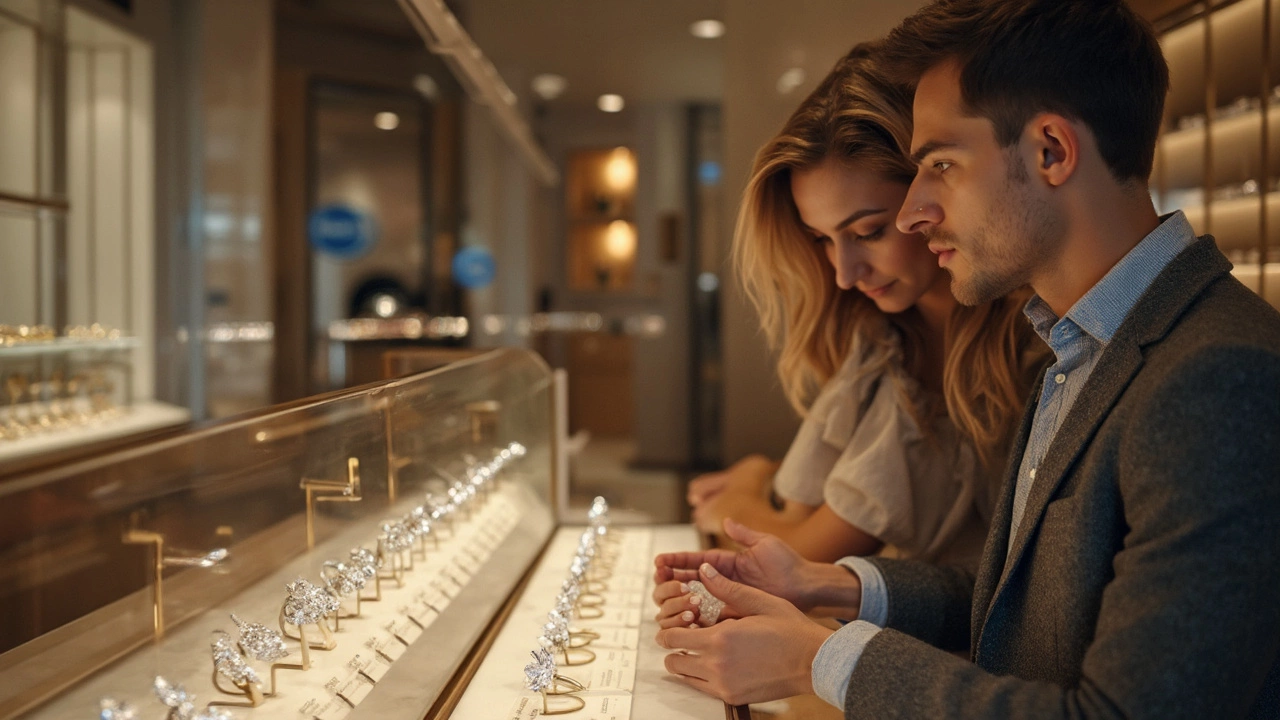Twenty thousand dollars for a wedding ring sounds wild, right? A lot of people get sticker shock when they start browsing jewelers and see those five-figure price tags. You might be wondering if you’re getting ripped off or if that much cash actually gets you something special—or if you even need to spend that much at all.
Let’s zoom out for a sec: Wedding ring prices are all over the place. Walk into the average mall jeweler and you’ll see options from a few hundred bucks up to the cost of a car. But where does that huge price difference come from? It’s not just about how shiny the ring looks on Instagram; there’s a method to the madness (sort of).
If you’re even thinking about spending that much, you probably want to know what exactly goes into that price tag, what you could expect for $20,000, and—maybe most importantly—if there are ways to get a gorgeous ring without totally draining your bank account. There are real ways to save if you know where to look and what questions to ask.
- What Drives the Cost of Wedding Rings?
- What Does $20,000 Get You?
- Is It Worth the Price Tag?
- Tips for Smarter Wedding Ring Shopping
What Drives the Cost of Wedding Rings?
You’ve probably noticed there’s a massive range when it comes to what people spend on wedding rings. Ever wonder why one ring costs $800 and another $18,000, even if they look kind of similar? Let’s break down what’s actually behind the price tags, so you know exactly what you’re paying for (and what you definitely don’t have to pay for if you don’t want to).
- Diamonds and Gems: The huge price swings usually start with the center stone. Diamond prices explode based on the “Four Cs”—carat, cut, color, and clarity. A 1-carat round diamond can cost $5,000 to $8,000 on average, but if you go up to 2 carats with top specs, you’re talking $20,000, easily.
- Metal Choice: Platinum rings cost about 20-25% more than gold. White gold, yellow gold, rose gold, and platinum all come with different price tags. Platinum is popular for being durable but expect to pay up for it.
- Brand and Designer: If you’re eyeing a Cartier or Tiffany ring, that little blue box or designer stamp adds thousands. Buying from a local jeweler or going custom can save you a lot.
- Craftsmanship: Intricate details, hand-engraving, vintage styles—these all ramp up labor costs. If you want a simple solitaire, great—you’ll pay less. Halo settings, side stones, or custom details? Expect that price to climb.
- Where You Buy: Big-name jewelry stores and luxury retailers have higher markups than online shops, wholesalers, or smaller stores. Shopping online can slash your bill by up to 40% for similar quality.
Just to give you real numbers, check out this average cost table for wedding rings from recent market surveys in the US:
| Ring Type | Average Price |
|---|---|
| Diamond Solitaire (1 carat) | $6,000 - $8,000 |
| Diamond Halo (1.5 carats total) | $9,000 - $13,000 |
| Designer Brand (1.5 carats) | $15,000 - $24,000 |
| Platinum Band Only | $1,000 - $2,500 |
So, if you see two nearly identical rings but with prices that are worlds apart, check the details: Is the diamond colorless or just “good enough”? Is it platinum or gold? Was it bought at a fancy boutique or a reputable online dealer? Sometimes it really is just the logo you’re paying for.
What Does $20,000 Get You?
Drop $20,000 on a wedding ring, and you’re playing in a different league from most folks at the jewelry store. According to data from industry insiders, the average American spends between $5,000 and $7,000 on an engagement ring in 2024. So, what do you actually get for triple or quadruple that?
Let's start with the stone size. With twenty grand, you’re looking at a center diamond that typically ranges from two to three carats if you choose a round cut. Opt for shapes like oval or emerald, and you might squeeze out a little more carat weight for the price. The quality will usually hit high marks in clarity (think VS1 or better) and color (G grade or above).
The setting is another big piece. Think platinum or 18k gold, maybe with a designer label or even custom made. Expect side stones and more intricate details—halos, hidden halos, pavé bands, maybe even a vintage-style setting reworked just for you. Branded rings from top designers (like Tiffany, Cartier, or Harry Winston) almost always push the price higher, sometimes by thousands, just for the name.
If you’re after colored gemstones—sapphires, rubies, emeralds—$20,000 can get you something stunning but different, with stones that hold strong value. Lab-grown diamonds can also stretch your cash, getting you a visibly bigger or higher-quality stone for the same budget.
- 2-3 carat high-quality natural diamond OR 4+ carat lab-created diamond
- Premium settings: platinum, 18k gold, designer labels
- Intricate custom designs or brand-name craftsmanship
- Impressive colored gemstone rings
- Better resale value (though you rarely get full price back)
The bottom line? If you spend this kind of money on a wedding ring, you’re going to see the quality up close: bigger, brighter, customized, and possibly from a high-end designer. Most jewelers will also throw in perks—full insurance appraisals, lifetime cleaning, and upgrade programs. If all those details matter to you or your partner, that price starts to make more sense.

Is It Worth the Price Tag?
So, is dropping $20,000 on a ring actually worth it? Well, it honestly depends on what matters most to you, your partner, and your financial situation. Let’s clear up a few facts that might make your decision easier.
First, there’s no rule saying an engagement ring cost has to hit a certain number. That “three months’ salary” idea? It was actually invented by diamond marketers back in the 1930s. Most couples today spend around $5,000 on an engagement ring in the U.S., according to 2024 wedding industry reports. A $20,000 ring is way above average—think rare center stones, designer labels, or lots of carats and custom features.
That said, some people truly value top-tier diamonds, custom designs, or famous luxury brands. Maybe you’ve been dreaming of a cushion-cut ring with a halo setting from Tiffany’s. Or maybe your family has strong traditions about rings as family heirlooms. In those cases, spending more might actually feel worth it for you.
But here’s what you shouldn't ignore: money talks after the wedding, too. A big ring can mean a smaller honeymoon, slower house savings, or extra debt. It’s a chunk of change that could go elsewhere. A lot of newlyweds report that their biggest regret was not having a real talk about their future finances before spending a ton on jewelry.
How do you figure out what’s right for you? Here’s a quick reality check:
- Can you buy the ring without racking up debt?
- Is your partner’s happiness about the ring or the gesture?
- Are you sacrificing big important goals (like a house or a trip) for the ring?
- Will you still love the ring if styles change five years from now?
If you answer no to the first or yes to some of the other tough questions, it might be time to reevaluate. Most people would rather start their marriage with less financial baggage and more shared experiences. There’s no wrong answer—just the one that matches your real priorities.
Tips for Smarter Wedding Ring Shopping
If you've got $20,000 on the table for a wedding ring, or even half that, you probably want your money to work for you. The truth is, with a bit of homework, you can get a stunning ring without feeling like you fell for a sales pitch.
First, let’s talk about value. You don’t have to pay premium prices just because you walk into a fancy jewelry store. Many buyers overpay for branding and store markups—sometimes by 20-50%. Research from CreditDonkey found that buying diamonds online can save you as much as 30% compared to major retailers.
"Don’t be afraid to negotiate or compare prices online before committing to a purchase. Knowledge really is power in the jewelry market." — The Knot
To sidestep unnecessary costs and find the best deal, check out these practical tips:
- Always compare prices: Don’t just stop at one store or website. Check out at least three options, including established online retailers and local jewelers. This opens up choices and usually means snagging a better price.
- Learn the Four Cs: If you’re getting a diamond, understand cut, color, clarity, and carat weight. For instance, a well-cut diamond that's slightly smaller can look better than a less sparkly big one. According to GIA, cut impacts sparkle the most.
- Get certified stones: Only buy diamonds with a legit certificate, like GIA or AGS. This proves what you’re actually paying for and protects your investment.
- Think about lab-created diamonds: The Diamond Pro notes lab diamonds can cost up to 40% less than natural ones, and most people can’t spot the difference.
- Choose the right metal: Platinum is pricey, but white gold or palladium can look just as sleek for less cash. Rose and yellow gold usually hide small scratches better, too.
- Know your budget (and stick to it): There’s no rule that says a ring has to cost a certain amount. Decide what’s comfortable for you and block out the viral “three-month’s salary” myth—it was invented by marketing folks ages ago.
Here’s a quick look at typical price comparisons for engagement rings in the U.S.:
| Ring Type | Average Price |
|---|---|
| Brand Name Designer | $10,000 - $25,000 |
| Traditional Jeweler | $5,000 - $15,000 |
| Online Retailer | $3,000 - $12,000 |
| Lab-Created Diamond Ring | $2,500 - $8,000 |
Last tip: double-check the return and upgrade policy before you buy. That way, you can swap or upgrade later if your style—or budget—changes down the road.

